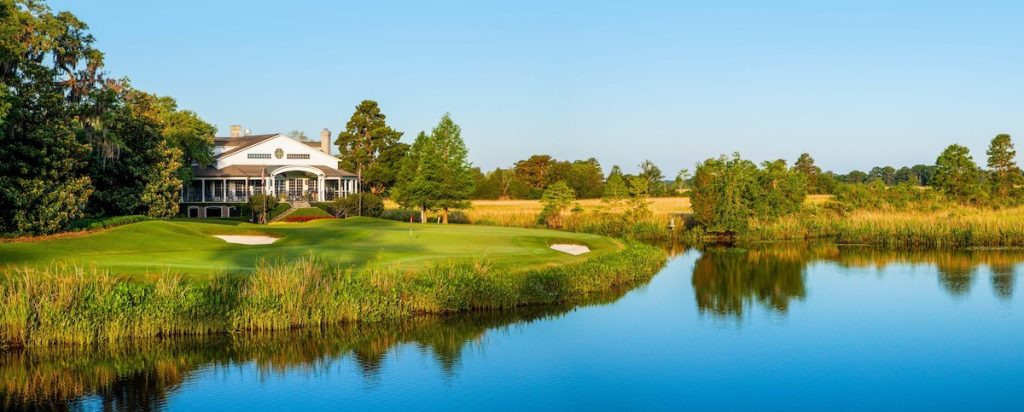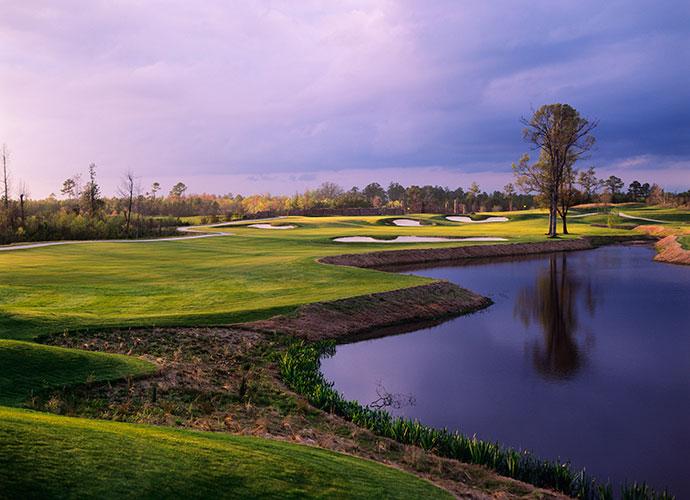The consistent intel on Myrtle Beach has always been that it’s a value play; a destination where an inexpensive golf trip can easily be booked, whether your group is four players or 40.
And the choices are broad and deep. The Grand Strand — a 60-mile stretch of South Carolina coast from Little River in the north to Georgetown in the south with Myrtle Beach about halfway between — boasts more than 80 golf courses of all shapes, sizes and price points.
But if bargains aren’t a priority on the South Carolina coast, it’s not necessary to travel farther south to Hilton Head or Kiawah Island to access high-quality, high-end golf. Top-drawer courses are available in the Myrtle Beach area. Here are the consensus choices:
Dunes Golf & Beach Club
Consistently the highest-ranked course in Myrtle Beach, the Dunes Club occasionally cracks the top 100 of the best courses in the U.S., according to national publications. And it ranks in the top 25 in South Carolina on many lists.
Built in 1949, the Dunes has architect Robert Trent Jones’ fingerprints all over it. Large, elevated greens with yawning bunkers make it a second-shot course. Over the years, it has hosted two USGA events — the 1962 U.S. Women’s Open and the 2017 U.S. Women’s Four-Ball. The Senior PGA Tour Championship was held at the Dunes from 1994-1999 and now, the PGA Tour has come to the Dunes in 2024-25 for the OneFlight Myrtle Beach Classic.
The Dunes is a private club, but there are a limited number of weekday starting times available for unaccompanied guests.
Caledonia Golf & Fish Club

Opened in 1994 to rave reviews, Caledonia remains ranked yearly among the top 100 public-access courses in the U.S. and in the top 20 in South Carolina. It was the first solo design by the late Mike Strantz, who built the course on an 18th-century rice plantation. It weaves through a canopy of sprawling live oaks and is arguably the most picturesque course on the Grand Strand. It’s a perennial favorite of visitors and a drink sitting in a rocking chair off the back of the restaurant overlooking the 18th green is a must.
Tidewater Golf Club
Built on a peninsula between the Intracoastal Waterway and Cherry Grove Inlet, Tidewater is not only scenic but also has a superior layout. Ken Tomlinson, an amateur architect with no design experience, laid out Tidewater and the result grabbed a great deal of attention. GOLF Magazine and Golf Digest both named Tidewater the best new public course in America when it opened in 1990. Since then, it has been ranked a number of times among the top 100 public courses in the U.S. and has been as high at 41st.
True Blue Golf Club
Strantz returned to Pawley’s Island to build True Blue, which opened in 1998, on the site of an old indigo plantation. It sits inland and across the street from Caledonia. They are sister courses but they look nothing alike. Whereas Caledonia is a more traditional design, True Blue is anything but. With fairways as wide as 50 or 60 yards, expansive sandy waste areas, along with large, sometimes complicated greens, Strantz took some inspiration from the rugged features of Pine Valley Golf Club and the native grasses of Pinehurst No. 2. The entire mix makes for golf on a splashier canvas.
Barefoot Resort

When it was built, the 2,345-acre Barefoot Resort was one of the most ambitious new projects in the Myrtle Beach area in years. It features four courses, all by big-name designers, hotels, shopping and housing. All four courses opened on the same day in 2000. The resort is located in North Myrtle Beach and is divided by the Intracoastal Waterway.
The east and west side of the resort is connected by a 328-foot swing bridge, first erected in 1934 in Edenton, N.C. The Barefoot developers bought the bridge, refurbished and moved it to the resort. When the resort opened, the bridge wasn’t yet ready for traffic, so golfers rode pontoon boats across the Intercoastal to get to the courses.
The Dye Course, designed by Pete Dye, is the highest ranked of the four and is the home of the Hootie and the Blowfish Monday After the Masters Celebrity Pro-Am. The Dye has been consistently ranked among the top 20 courses in South Carolina and spent some time ranked in the national top 100 public access courses. It was also the site of one season of Golf Channel’s “Big Break.”
Tom Fazio designed the Fazio Course and has the look of one of his signature courses. Weaving through centuries old live oaks, water, expansive waste areas and trees all come into play. The Fazio was ranked in the national top 100 public-access courses in 2009 and remains ranked one of the best in the state.
Designed by Davis Love III, the namesake Love Course reflects Love’s design philosophy, which is minimalist in nature. The course was laid on the land without a lot of dirt moved to shape the holes. Fairways are generous and rough is minimal, making the Love a second-shot course, with green complexes inspired by Pinehurst No. 2.
TPC Myrtle Beach
Located near Murrells Inlet, the TPC Myrtle Beach opened in 1999 and, at the time, was the 100th course built on the Grand Strand. It was so well regarded, that in 2000, the Senior PGA Tour Championship moved from the Dunes Club to TPC Myrtle Beach for one year. Fazio, with an assist from PGA Tour legend Lanny Wadkins, created a course that moves through tree-lined fairways, dotted with water hazards and features large, undulating greens.
Grande Dunes Resort Course
Built in 2001 and designed by Roger Rulewich, the Resort Course at Grand Dunes immediately became a popular destination for tournaments and outings. It was built on a bluff overlooking the Intracoastal Waterway, the expansive marina and the resort’s hotel, the Marina Inn. Seven holes play along the Intracoastal. The Resort Course underwent and extensive renovation of its greens and bunkers, which was completed in 2022.
